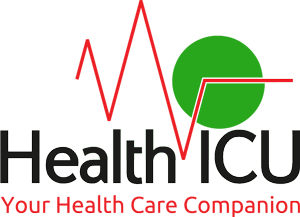As a complex industry, the medical field relies on patients to follow through with the treatment plan given by their healthcare provider. Whether it’s taking correct doses, refilling prescriptions or getting a referral for another appointment, patient engagement is important to lasting recovery and health.
Why Engagement Lacks
There is no clear-cut answer as to how to increase patient involvement after an appointment. Individual responses differ between people. The most important aspect of engagement is improving the ability for patients to execute their care plans and perform the advised actions to achieve their healthcare goals.
Doctors often have decades of experience and knowledge to provide the best plan of action for improving a patient’s well-being. Unfortunately, some of the medical language, guidance and advice may be lost in translation for an individual who is unfamiliar with the medicinal vernacular. People with low literacy in regard to the healthcare system are typically unable to meet their needs. About 52% of patients have low healthcare literacy and contact customer service 13% more often than their high-literacy counterparts.
Another aspect of poor engagement could exist on a financial level. With the cost of American healthcare on the rise, nearly one in two Americans can’t afford it. For those with insurance, about 70% of patients express confusion regarding their benefits and medical bills. With the lack of service affordability, many people are stuck without proper care.
Insufficient patient engagement can be attributed to the socioeconomic factors that individuals face. Housing, social services, geography and education can affect a person’s access to healthcare. Without proper access, receiving medical help moves lower on a priority list.
Why Patient-Doctor Relationships Are Essential
As many industries and individuals become more reliant on technology to help them accomplish certain tasks, the medical sector is no exception. Technology does make it easier to provide telehealth appointments, medication reminders, online portals for information and other helpful tools. However, there is still one aspect that remains the most important: the patient-doctor relationship.
Because many people face financial, socioeconomic and literacy issues, physicians are expected to support and guide their patients through the complex system of healthcare. In addition to the technology, individuals expect time, trust and communication from their doctors. Unfortunately, some obstacles may arise during this process, such as too much focus on what’s happening on the computer and miscommunication about shared decision-making.
How to Improve Patient Engagement Beyond Technology
If much of the guidance is lost in technology, it may be time to get back to the basics. Improving the patient-doctor relationship through good, old-fashioned communication may be the key to better engagement.
For the patient:
- Take notes. With excessive jargon and complicated terminology, it can be helpful to write down anything you may want to research later.
- Ask questions. If there is something you don’t understand, ask about it. Your doctor is usually an expert on healthcare. Take advantage of having him or her as an in-person resource.
- Take the advice seriously. It can sometimes be easier to dismiss medical advice if it sounds too complicated or cliché. However, a medical expert probably knows the best way to treat a condition.
For the physician:
- Keep information simple. Much of the material can be lost on a patient who doesn’t have medical literacy. Be as communicative as possible and determine how well he or she understands before it gets too far.
- Be specific. With search engines giving thousands of results about certain symptoms, use specific terms and treatment options to avoid confusion.
- Get patients involved. Make medical care personal and concrete to get the person involved in the recovery process. The patient will be more likely to follow the plan of care if they realize how it affects their future.
Improving Engagement With Technology
Because technology is inevitably a large aspect of many industries, using it to your advantage could improve involvement in treatment plans. For instance, aged care software Australia can be used to create personalized care plans that can be easily followed by staff as well as log interactions accurately for review. While doctors may be experts in their field and know exactly how to treat certain conditions, it loses effectiveness if the person is unable to put forth the actions necessary to accomplish it.
Improving patient engagement may start with open communication and trust, but technology could be the extra push to elicit new methods of treatment delivery. To learn more about how doctors are using technology to improve patient involvement, see the accompanying resource.
This infographic was created by Specialdocs, a physician practice consulting group



